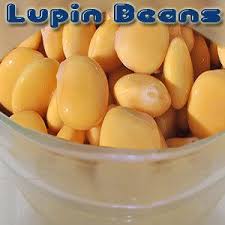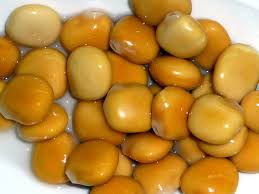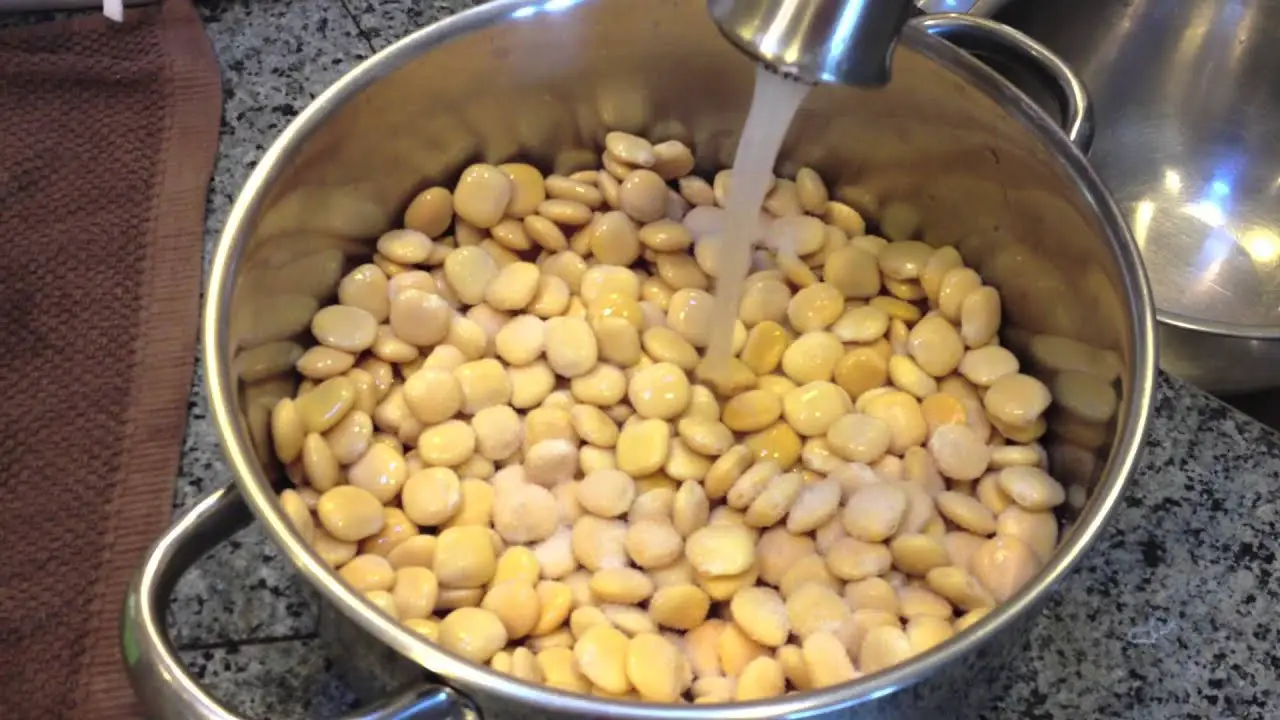Lupini Beans – Home Recipe
Lupini Beans – Home Recipe
Do you recall Lupini Beans or maybe you still serve them over the holidays. Remember..? You pop them into your mouth through that little slit in the end almost as if it were put there so you could eat them easier…. LOL

Lupin or lupini beans are the yellow legume seeds of the genus Lupinus. They are traditionally eaten as a pickled snack food, primarily in the Mediterranean basin.
Lupini beans are commonly sold in a brine in jars (like olives and pickles). They can be eaten by making a small tear in the skin with one’s teeth and “popping” the seed directly into one’s mouth, but can also be eaten with the skin on. The skin can also be removed by rubbing the bean between forefinger and thumb. In countries like Portugal, “tremoços“, are very popular in bars as a snack while drinking beer.
The earliest archaeological reports on lupins are referred to the Twelfth Dynasty of Egyptian Pharaohs (over 2 thousand years BCE). In their tombs, seeds of Lupinus digitatus Forsk., already domesticated in those times, were discovered. Seven seeds of this species were also retrieved in the tombs of this dynasty dated back to the 22nd century BCE. They are the most ancient evidence of lupin in the Mediterranean.

Lupini were popular with the Romans, who spread their cultivation throughout the Roman Empire. Today, lupini are most commonly found in Mediterranean countries and their former colonies, especially in Spain, Portugal, Greece, and Brazil, as across the Middle East (where it is part of Sham El Nessim holiday meals).
The Andean American variety of this bean, Lupinus mutabilis, was domesticated by pre-Incan inhabitants of present-day Peru. Rock imprints of seeds and leaves, dated around 6th and 7th century BCE, are exhibited in the National Museum of Lima.[1] It was a food widespread during the Incan Empire. Lupins were also used by Native Americans in North America, e.g. the Yavapai people.
*
This site contains product affiliate links. We may receive a commission if you make a purchase after clicking on one of these links.


